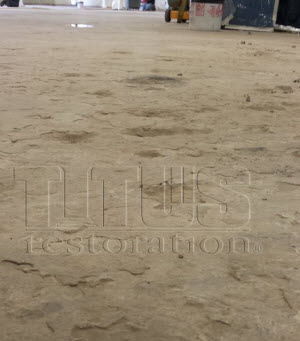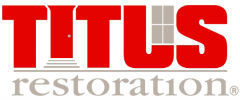 The one guarantee about concrete floors is that someday they will almost inevitably require concrete floor resurfacing. Even perfectly poured concrete is not immune to damage caused by moisture, earthquakes, forklift traffic, continual freezing and thawing of the ground, corroding rebar, and settling earth. Another common defect in concrete is spalling, which is typically characterized by flaking or pitting of the concrete surface especially at the joints. Evidence of minor spalling can sometimes, but not always, be ground off during the sealing and polishing process.
The one guarantee about concrete floors is that someday they will almost inevitably require concrete floor resurfacing. Even perfectly poured concrete is not immune to damage caused by moisture, earthquakes, forklift traffic, continual freezing and thawing of the ground, corroding rebar, and settling earth. Another common defect in concrete is spalling, which is typically characterized by flaking or pitting of the concrete surface especially at the joints. Evidence of minor spalling can sometimes, but not always, be ground off during the sealing and polishing process.
If you have noticed issues arising with your concrete floor, you may be curious whether resurfacing is necessary. To help you make that decision, here are three sure signs that it’s time for you to consider concrete floor resurfacing:
1. You notice cracks developing in the concrete floor.
All concrete cracks, you will find it hard to find a slab without cracks. Cracks can be caused by a number of problems; some of those problems can be addressed by a concrete floor resurfacing company. Crack stabilizing and filling are some options that can be provided if resurfacing isn’t an option.
2. Pits begin appearing in the concrete.
Pitting is often caused by objects being dropped onto the concrete surface. It can also be a problem of soft concrete. Soft concrete is found in the Southeast and can be hardened with penetrating sealers and polishing for abrasion resistance.
3. Flaking or spalling occurs on the concrete.
The flaking of concrete, or delamination, is is usually caused by an error during the concrete pouring, but some patching methods can help depending on the needs of the facility.
Spalling occurs at the joints when heavy loads pass over unprotected or weaker joints. The joint begins to unravel and eventually, if left unrepaired, the cracked concrete can act like speed bumps for machinery such as hand carts or forklifts. This additional wear and tear increases maintenance requirements for your machines, slowing down production and costing you more money in repairs and lost time.
Additionally, unsealed cracks allow dirt and debris to accumulate, making it harder to keep your floor clean. This is especially a problem if your facility is a USDA/FDA certified plant, which requires that all cracks be sealed in order to maintain the cleanliness of your building.
How Does Titus Handle a Concrete Floor Resurfacing?
Titus Restoration begins a concrete floor resurfacing project by assessing the damage and determining the cause of the cracks and pits. If the cause can be eliminated, that aspect is addressed first. Then, we carefully clean and fill the cracks and pits with crack filler, joint filler, and/or concrete patching. Spalling may be patched with concrete or mortar patching products.
We always recommend completing a concrete floor resurfacing project with a lithium-based densifier, a sealer, a polish, and a stain protector to help prevent further damage from occurring in your concrete floor.
Titus Restoration has been trusted by numerous companies for concrete floor resurfacing projects. We have worked on concrete surfaces of all sizes, locations, and purposes. Our level of experience and knowledge in the concrete field is unsurpassed. No matter the concrete problems you are facing, we are sure to have the solution you need.
